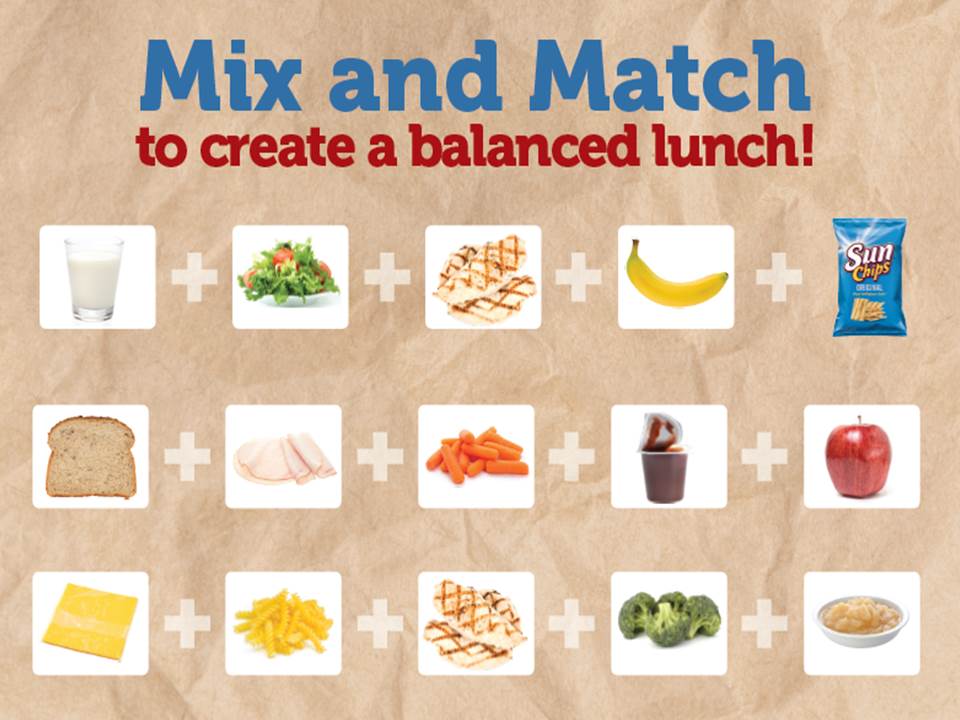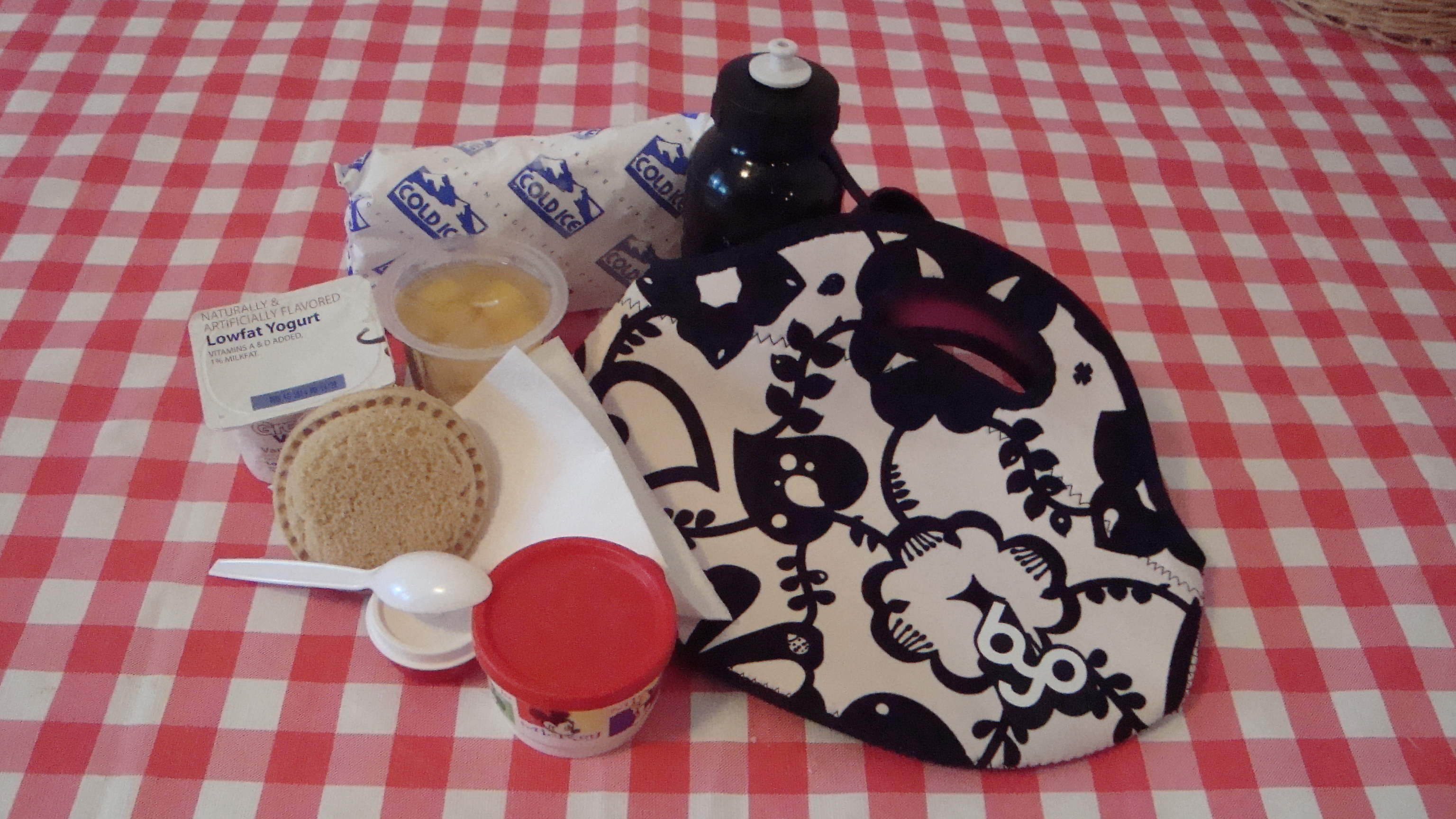Sunbelt Ag Expo – 10/13/14 – Setup Day LIVE Feed
Local county agents are working hard to set up at the Sunbelt Ag Expo. You can watch our live feed below!
Local county agents are working hard to set up at the Sunbelt Ag Expo. You can watch our live feed below!

 It’s time to start getting backpacks ready, lunches packed and kids off to school. Back to school time is the perfect time to start packing a healthier lunchbox. Packing your child’s lunch may contribute to the difficulties of getting out the door in the morning but it does not have to. You know your child better than anyone, their likes and dislikes, so go with what you know.
It’s time to start getting backpacks ready, lunches packed and kids off to school. Back to school time is the perfect time to start packing a healthier lunchbox. Packing your child’s lunch may contribute to the difficulties of getting out the door in the morning but it does not have to. You know your child better than anyone, their likes and dislikes, so go with what you know.
The first step to packing a lunch is to determine how much food is enough for your child. You will know you did not pack enough when they come home and tell you they ate all their food and are still hungry. Likewise, if you pack too much, you will know by seeing uneaten or half-eaten items in their lunch box at the end of the day. Start by packing between 3 and 6 items. They will have enough variety in their lunch box to sustain them throughout the school day without too much waste. MyPlate.gov is a great resource for building a balanced meal (protein, vegetable, fruit, grain, dairy).
Secondly, pack as much as you can the night before. This will decrease morning stress. Cut up fruits and vegetables and store in an airtight container in the refrigerator. Cut up fresh ingredients for sandwiches, if required. Make up cracker or dried fruit packs. Wrap up home-baked treats and place in the lunch box.
Lastly, keep in mind this food safety tip: Include gel ice packs to keep refrigerated food cold. Refrigerated food shouldn’t be above 40 degrees for more than 4 hours due to increased bacterial growth causing possible illness.
Lunchbox Meal Ideas:
1.) Wheat crackers, cheese cubes, deli meat, strawberries/blueberries, snap peas (with their favorite dipping sauce*)
2.) Mini quiche, carrots, celery with peanut butter and raisins, whole fruit (pear, orange, banana)
*Want something to dip kid-friendly veggies in besides ranch? Try low-fat Greek yogurt, hummus, or this cottage cheese veggie dip:
1/2 cup low-fat cottage cheese
1/4 teaspoon lemon pepper
Enjoy with baby carrots, snow/snap peas, bell pepper strips
Snack Ideas:
1.) Whole wheat pita cut into wedges with 2 tablespoons hummus for dip
2.) Trail mix: mix 20 almonds, miniature box of raisins, and ¼ cup sunflower seeds
For additional information on creating nutritious meals, contact your local Extension office.

Lunch, that is. Yes, it’s back to school time. Whether the words “back to school” make you happy or sad, it is that time of year. One thing we can agree on, though, is that a healthy, safe, attractive lunch our kids will actually eat makes everyone happy. Here are a few things to keep in mind if you’re packing school lunches this year.
Healthy – Be sure to use foods from all five food groups:
Safe – Keep cold foods like lunch meat and yogurt cold by adding freezer gel packs to the lunch box. Keep hot food, like soup, hot by using an insulated container in an insulated lunch box. For more information on safely packing food to be eaten later, check out http://healthymeals.nal.usda.gov/resource-library/food-safety/packing-food-safely
Attractive and Fun – Create a theme in the lunchbox. Try: a rainbow of colors, a favorite sport, the circus, shapes, animals, things that are crunchy, or all the foods from a certain country. Cut sandwiches into shapes using cookie cutters. Since we eat with our eyes, use fun containers of different colors and shapes to hold food. Put in chopsticks, straws, and napkins with fun designs for something different. Get the kids to help you. They’re a pretty creative bunch if you give them the chance. And most kids who help make their own meal are proven to be better eaters. And whenever you can, include special notes to let them know you care.
Are you getting ready to start packing lunches? Make them healthy, safe, and fun. You and the kids will both be so glad you did. For additional information on packing lunches, contact your local Extension Office.
 “Whew, I’m thirsty!” As temperatures rise, you may be saying that more frequently and for good reason. Better than one-half of our body weight is water and we lose water daily in sweat, urine, and feces. Water converts food into energy, regulates our body temperature, protects and cushions vital organs, and promotes regular bowel movements. In hot weather and during physical activity, it is easy to become dehydrated if we lose more water than we consume. Symptoms of dehydration include: difficulty swallowing, dry mouth due to low saliva production, headaches, fatigue, loss of appetite, dry eyes, muscle cramps, and kidney stones.
“Whew, I’m thirsty!” As temperatures rise, you may be saying that more frequently and for good reason. Better than one-half of our body weight is water and we lose water daily in sweat, urine, and feces. Water converts food into energy, regulates our body temperature, protects and cushions vital organs, and promotes regular bowel movements. In hot weather and during physical activity, it is easy to become dehydrated if we lose more water than we consume. Symptoms of dehydration include: difficulty swallowing, dry mouth due to low saliva production, headaches, fatigue, loss of appetite, dry eyes, muscle cramps, and kidney stones.
Most persons need six to eight cups of fluid every day. If you are eating high-fiber foods or taking a fiber supplement, taking certain medications, especially diuretics or “water pills,” engaging in vigorous physical activity, or the weather is hot and humid, you will need to increase your fluid intake. One-third of healthy persons 65 years or older have mild dehydration. If you have a senior adult in your life, encourage them to drink plenty of fluids to stay hydrated.
In addition to water, include these beverages regularly:
Here are a few tips for adding more fluids:
What about sports drinks? Sports drinks contain water, sugar for energy, and electrolytes, including sodium, to replace those lost through perspiration. They promote fluid retention and tend to encourage fluid intake because of their taste. They are highly recommended during intense physical activities that last over one hour. For casual activities of less than an hour, water is a good choice for hydration. Be aware that beverages high in sugar, including fruit juices, can cause nausea or gastrointestinal distress. Caffeine or alcohol increase urine output and reduce fluid retention. Carbonated beverages can make you feel full, decreasing the amount of fluid you drink.
So stay hydrated this summer with healthy fluid choices to beat the heat!
Sources: Healthy Eating: Fluids
Casa, D.J., et al. Fluid Replacement for Athletes Journal of Athletic Training. 2000; 35(2): 212224.
Parents and guardians across America work hard everyday to put food in the mouths of their families. We all have to make choices in the foods we eat and provide for our children. This process of planning, shopping, and preparing healthy meals is challenging, but especially for those that have limited income and resources. These families that struggle for food security put themselves at risk for a host of nutrition-related chronic diseases including obesity, high blood pressure, cardiovascular disease, and diabetes.

EFNEP teaches families how to shop for healthy foods, plan and cook meals, save money on food purchases, and incorporate physical activity into their lives.
Over 26% of Leon County’s population is living below the poverty level, which is much higher than the 16.5% of Florida’s total population. In addition, a relationship between income level and overweight status has been established. Of the adults in our county that make less than $25,000 per year, over 70% of them are overweight or obese. These are scary statistics that bring the problems of poor nutrition and limited-income to light.
Having access to nutritious food is a good first step toward putting healthy meals on the family’s table. Surprisingly, only 77% of eligible Floridians in 2010 asked for and received assistance through the Supplemental Nutrition Assistance Program (SNAP). Sadly, it seems that a very large number of eligible Floridians are not getting the help that they need to feed their families.
How can parents and caregivers make the most of their food budget and make healthier choices when planning, shopping, and preparing meals? This is where nutrition education can play a key role to ultimately improve the diet and health of the total family. The Expanded Food and Nutrition Education Program (EFNEP) is offered in over 10 counties in Florida, including Leon County, and is designed to empower families to practice and adopt positive nutrition and lifestyle behaviors. Classes are free and consist of a series of 8 interactive lessons that teach adult participants how to shop for healthy foods, plan and cook meals, save money on food purchases, and incorporate physical activity into their lives.
Classes are offered throughout the county at various community sites. If you are interested in starting a class with your group, church, or worksite, or to find out more information about EFNEP, contact Amy Mullins, Registered Dietitian and Family and Consumer Sciences Agent at UF IFAS Leon County Extension, amymullins@ufl.edu or 850-606-5203. Learn more about SNAP eligibility and benefits by visiting http://www.fns.usda.gov/
 The President of the United States of America, Barack Obama has proclaimed obesity a national, serious public health issue. As such, he is encouraging all Americans to learn about and engage in activities that promote healthy eating.
The President of the United States of America, Barack Obama has proclaimed obesity a national, serious public health issue. As such, he is encouraging all Americans to learn about and engage in activities that promote healthy eating.
How can you get involved? Let’s start with the family meal. There are many benefits to family meals. Families are more likely to eat a nutritious meal when most or all of the family eats together. Plus, families who eat at home have control of portion sizes and ingredient choices. Additionally, children who eat with their families are likely to consume more fruits, vegetables, and whole grains and less fat sugar and empty calories.
Research shows that adolescents are also less likely to smoke, drink, and use illegal drugs during their teen years. Enjoying family meals together enhances family communication and provides opportunities for families to share traditions, recipes and family heritage that can be handed down through each generation. And, family meals improve manners, too!
We are not talking about a Thanksgiving type spread here. A family meal can be breakfast, lunch or dinner. Nutrition experts state the meal does not even have to be enjoyed around the table. The important fact is that it is enjoyed together creating a lifetime of positive memories.
Cooking at home can be an intimidating task, but a rewarding one for you, your family, and your budget. Did I mention health?
Homemade meals are easy once you learn a few cooking basics. Once the basics are understood’ a cook can develop the confidence to be creative and experimental. Using family mealtimes as instructional times can also be a wonderful opportunity for you to teach your children how to cook good, healthy meals too.
Are you wondering how to get started?
The University of Florida, IFAS EDIS publications contain a wealth of information about purchasing, and preparing foods http://edis.ifas.ufl.edu/ (put cooking in the search bar). Another good resource is the Cook it Quick series by Alice Henneman, MS, RD, University of Nebraska Extension in Lancaster County http://food.unl.edu/fnh/cooking-school. Not only will you find quick tips and tricks but you can hone in on cooking techniques as well as find quick, healthy recipes.
Vow to prepare and eat more meals at home. You and your loved ones will be glad you did!